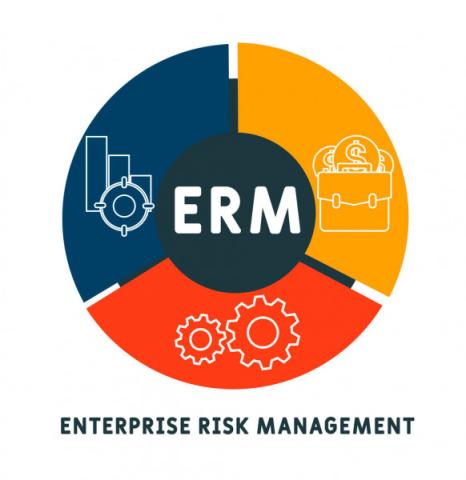
What is ERM?
Enterprise Risk Management is a process that helps organizations identify and assess risks, and develop strategies to minimize or manage them. It is a term used in business to describe risk management methods that help to reduce or manage potential problems.
Objectives of ERM
The objectives of ERM
- Helping the team members understands what is risk and then identify the risk.
- Identify and assess a wide range of risks that may negatively affect the achievement of institutional goals and objectives
- Ensuring that appropriate ownership and accountability for risks are in place.
- Risk mitigation and monitoring plans will be developed and implemented by the risk owners.
- The establishment of the program structure and function of leaders on campus to determine and prioritize the risks
- Provide high-level leadership with critical information to make risk-informed decisions, and effectively allocate resources
Components of ERM Framework
Governance and Culture- Governance sets the tone for the organization and reinforces the importance of enterprise risk management. This oversight responsibility is essential to ensuring that risk is managed effectively. Culture refers to ethical values, desired behaviors, and an understanding of risk within an entity.
Strategy and Objective-setting- In the strategic planning process both Enterprise Risk Management and Strategy and objective-setting work together. The risk appetite is aligned with the business strategy, which guides how the company will put the strategy into action. This risk response is then used to evaluate how well the company is doing.
Performance- Identify and evaluate outcomes that may affect risk as necessary for strategic and business objectives. Risks are given more importance in terms of how much risk an individual is willing to take based on their appetite for risk. The organization then selects risk responses and reviews the portfolio of risks it has taken on. The results of this process are shared with key people who need to know about it.
Review and Revision- Reviewing entity performance can help an organization assess how well its Enterprise Risk Management components are functioning over time, and in light of substantial changes. This can include assessing whether revisions are needed to those components.
Information, Communication, and Reporting- Enterprise risk management requires continuous processes to obtain the necessary information, both inside and outside the source, under the organization.
Types of Enterprise Risk
Hazard risks - Risks that present a high level of threat to life, health, or property are referred to as hazard risks.
Financial risks - Financial risks are risks that can impact your finances. The financial consequences to a decision can include increased costs or a decline in revenues.
Strategic risks - Strategic risks are risks that can affect a company's ability to make sound business decisions. However, with the right planning and strategy, these risks can be minimized or avoided altogether.
Reputation Risks - An Organisation's reputation is based on the opinions of its stakeholders, rather than its own performance, because of a wrong decision the company's reputation is at a risk.
Operational risks - To reduce the chances of accidents, incidents, or unexpected circumstances, operations are often tried and tested. Operational risk is a risk that can come from failures in internal processes, people, or systems, or from external events. Operational risks are risks that could have a significant impact on an organization.
Difference between COSO & ISO 31K
- The COSO framework focuses more on the overall corporate governance, while ISO 31000 starts by defining the purpose of risk management. The risk process involves identifying risks, developing risk criteria, and making decisions based on those risks.
- ISO 31000 defines the framework and the process separately. Whereas COSO is a framework that combines the concepts of risk assessment and risk management.
- ISO 31000 is the globally accepted standard for risk management. COSO was developed in the United States in partnership with a large accounting and consulting firm.
Conclusion
With the rapidly changing business environment, each new change brings new types of risk to manage. Business leaders are expected to have strategies and solutions to address each new problem. Thus, the importance of ERM is reinforced to mitigate dynamic risks.
